- Home |
- Why With Us |
- About Us |
- Booking |
- Contact Us |
- Site Map


Gokyo Ri, Chola Pass and Chukung Ri with Kala Patthar
26 days (ktm-ktm) Days from
Namche to Gokyo Valley, climb Gokyo Ri (5483m), traverse over Cho La Pass (5420m) to main trail to Everest BC, ascend to Kala Pattar (5545m), then traverse over Kongma La Pass (5553m) to Chukung Valley and ascend Chukung Ri (5550m) for another stunning panorama of highest Himalayan peaks!
| Max. Elevation : | Grade : Strenuous |
| Best season : Oct-Dec&Feb-May | Type of trek : Tea house/Camping |
| Duration : 26 Days | Starting point : Lukla |
| Ending point : Kathmandu | Highlights : Nature |
For those seeking a sturdy adventure and longer trek through the unparalleled Khumbu we offer this loop through the Everest area. We begin in exotic Kathmandu before flying to Lukla, where we meet our staff and begin trekking deep into Sherpa country. We venture up the Dudh Kosi river valley, crossing narrow suspension bridges which sway above the river's thundering rapids, to the Sherpa capital of Namche Bazaar. We then move away from the main trails and head north up to the spectacular glaciers and sacred turquoise lakes of the remote and beautiful Gokyo valley.
A non-technical, yet challenging hike to the top of Gokyo Ri (5483m) provides us with a unique vantage point for viewing the magnificent north face of Everest, and her sister mountains Lhotse, Makalu, and Cho Oyu. We then cross into the Khumbu Valley towards Everest base camp, over the daunting Cho La, or Pass of the Wolf at 5420m. You'll next tackle Kala Pattar (5545m), a summit with worthy views of both Everest and the Khumbu Icefall. We continue down the Khumbu valley through vibrant Sherpa villages and their colorfully decorated stone houses, past beautifully carved Mani stones, sacred chortens and prayer flags fluttering in the wind. As you make your eastern entrance into the Lhotse Valley, you'll find yourself in the quaint settlement of Chukung. For those who desire, there is the opportunity to hike to the top of Chukung Ri (5550m), a non technical walk up a well defined trail for magnificent views of the dramatic South Wall of Lhotse.
During the last leg of our circuit trek, you'll travel beneath the fantastic ice pyramid that is Ama Dablam, onward to the monastery at Thyangboche. The circuit concludes at Namche.
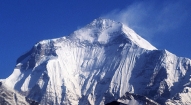
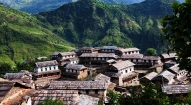
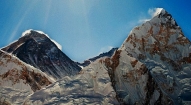
Day 01: Arrive Kathmandu International Airport- T I A (1300m) and transfer to hotel.
Day 02: After breakfast we set out for an extensive guided sightseeing tour of Kathmandu valley’s cultural, historical, religious and (world heritage) sites. During the course, we visit the famous Pashupatinath temple of Lord Shiva situated at the holy bank of River Bagmati where we will also observe the Hindu cremation ritual. We then proceed to the Boudhanath stupa, a major pilgrimage centre for the Buddhist faith which also is the largest of its kind in the world. We then have a short break for lunch followed by a visit to Swoyambhunath stupa also known as the Monkey Temple from where we can have a bird’s eye view of whole of Kathmandu valley. Following this we then proceed for a visit to Kathmandu Durbar Square, the oldest royal palace of Kathmandu and a UNESCO world heritage site. The whole are of Kathmandu Durbar Square is dotted with numerous fascinating Nepalese architect dating back many centuries. The site is also the home to Nepal’s living Goddess – Kumari, where we will also have the opportunity to experience firsthand this unique Nepali tradition. In the evening we will attend the welcome dinner hosted by Makalu Adventure with live Nepalese culture shows.
Day 03: Kathmandu ( 1310m) - Lukla (2827m) - Phakding (2652m) 5 hours
After a very early start, and an early take off from Kathmandu Domestic Airport, a 45 minute flight is all it takes to propel us into the Everest region of Nepal. The landing at Lukla (2800m) is spectacular and on arrival we are greeted by our sirdar and trekking crew who organise the luggage and hustle us off for tea. After a leisurely lunch we start the trek in earnest, setting off for a gentle walk to Phakding (2800m), a further 3 hours to the north. The trail leads through Lukla, past hotels, shops and airline offices to the edge of the Lukla plateauwhere the trail drops to meet the intersection of the Jiri trail at Chablung. From here the trail follows the Dudh Kosi north through the village of Ghat and then finally to Phakding where we spend the night.
Day 04: Phakding - Namche Bazar (3440m) 7 hours
From Phakding it is a steep ascent to Namche Bazaar- a prosperous market town and the administrative center for the Khumbu region. In Namche, one will often see Khampa Tibetans who have crossed over from Chinese occupied Tibet to trade with the Sherpa of the Khumbu. At Jorsale the trail enters Sagarmatha Nat'l Park. Visit the National Park museum situated on a hilltop above Namche. With good weather you will be rewarded with views of Everest, Nuptse and Lhotse.
Day 05: leisure (acclimatization) in Namche Bazaar: A 3 to 4 hour acclimatization day hike to the village of Thame (3800m), located up the Bhote Kosi (Tibetan River) valley, west of Namche. The Ngampa La pass at the top of this long valley is an important crossover point for both Tibetan and Sherpa traders. From Thame we are treated to spectacular views of the snow covered giants of the Khumbu as well as many lesser but equally dramatic ice clad peaks. Intricately carved Mani stones line the way to Thame and are renowned for their complexity and beauty. After we pay a visit to the Thame gompa we return to Namche for the night
Day 06: Namche – Kunde - Khumjung (3790m):
We leave Namche for the climb to the Sherpa villages of Kunde and Khumjung. Khumjung, which is more traditional in appearance than Namche, is the location of the Hillary School, a primary and secondary school financed by the Himalayan Trust, the philanthropic organization established by Sir Edmund Hillary. There is also a gompa possessing a skull said to be of the yeti. We pause here for an acclimatization day. Camping.
Day 07 -10: Crossing the flanks of Khumbila, the abode of the patron god of the Khumbu region, you descend steep switchbacks back to the Dudh Kosi River. Climb up the valley toward the river's source, and move into the vegetational zone of juniper and conifer. Along the way the trail passes through many kharkas, or summer settlements, inhabited during the summer months when the Sherpas bring their yaks to graze the high pastures. One of these, Machhermo, was the site of a 1974 purported yeti attack on a Sherpa woman and herd of yaks, the most credible yeti incident yet reported. The landscape that greets you upon arrival at Gokyo is that of turquoise lakes, glaciers and savage mountain scenery. While there you may scale the easily climbable peak of Gokyo Ri (5483m) for a magnificent panorama of summits including Cho Oyu, Gyachung Kang, Pumori, Changtse, Everest, Nuptse, Makalu, Ama Dablam, Kang Taiga, Thamserku, Khumbila, Tawoche and Cholatse. Camping.
Day 11 -12: Cross the dry glacier below Gokyo to Dragnag and ascend a narrow valley to a camp at Chugima. After breaking camp the next day at Chugima we make an early morning crossing of Cho La Pass (5420m) to a fantastic campsite at Zangla below the north face of Cholatse. Camping.
Day 13: Traverse the flanks of Lobuche peak to the settlement of Lobuche (4930m) and camp for the night. Camping.
Day 14: Leave at dawn to ascend Kala Pattar. Hike up an increasingly rough and steep trail through Lobuche (4930m) to Gorak Shep (5140m). Pass the small and often frozen lake, and continue upward to Kala Pattar (5545m). Catch your breath at the top and survey one of the most magnificent mountain panoramas in the world: the south and west faces of Mount Everest (8848m) and its entourage of neighboring peaks Lhotse and Nuptse. Look down on Everest Base Camp where mountaineers are assembled. Everest, the world's highest mountain, was first climbed in 1953 by Sir Edmund Hillary and Tenzing Norgay. Its Nepali name, Sagarmatha, means 'Churning Stick of the Ocean of Existence.' The Sherpas call it by its Tibetan name, Chomolongma, which means 'Mother Goddess of the Universe.' The name we know comes from Sir George Everest, who was head of the Survey of India from 1823- 1843. Return to Lobuche for the night. Camping.
Day 15: We cross the wide glacial moraine and scale the Kongma La Pass (5553m) to the settlement of Chukung (4700m). Camping.
Day 16: Climb to the top of Chukung Ri (5550m), a non technical walk up a well defined trail for magnificent views of the dramatic South Wall of Lhotse. Camping.
Day 17: Descend down valley past the village of Pangboche, and after a walk through a beautiful rhododendron forest we arrive at the monastery of Thyangboche (3860m). Destroyed by fire in 1989, this gompa has since been reconstructed. From Thyangboche the mountain panorama is one of the most breathtaking in the Khumbu. From this vantage point, the massive Nuptse-Lhotse wall conceals all but the tip of Everest. Rising above the monastery is "Mothers Charm Box", Ama Dablam (6848m). The name stems from a mountain formation said to resemble a dablam, a charm box worn by female residents of the Khumbu and Tibet. Descend back via the Imja and Dudh Kosi River valleys past Mani stones and water driven prayer wheels back to Namche Bazaar. Camping.
Day 18: Continue down valley to Namche. Camping.
Day 19: Trek down valley following the Dudh Kosi River to Lukla. Camping
Day 20: Flight from Lukla to Kathmandu. Transfer to hotel. Rest of the day is at leisure.
Day 21: Sightseeing of Bhaktapur and Patan and return to Kathmandu for overnight at hotel.
Day 22: Final departure
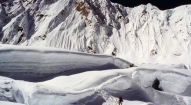
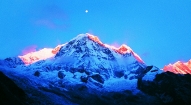
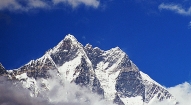
- All ground transfer by private vehicles as per our itinerary
- Fine hotel –Thamel Eco Resort in Kathmandu (twin sharing including b/f and taxes)
- Welcome dinner with live Nepalese cultural program hosted by Makalu Adventure
- Guided sightseeing around Kathmandu world heritage sites including all entrance fees
- All domestic airfares (Kathmandu-Lukla- Kathmandu)
- Organized camping trek arrangements including all high quality German Salewa / UK Super Quasar camping equipment such as two men tent, kitchen tent, dining tent, toilet tent, tables, chairs, mattresses, hot water bags, pillows, inner sheets etc.
- Everyday three times hot meals while on trekking prepared by our professional kitchen crew.
- National park, conservation area permit and fees
- Guide, porters, their daily wages, insurances with all necessary lodging / fooding arrangements.
- Administration service during rescue and evacuation (if required)
- Down jacket, sleeping bags, Trekking kit bag/duffel bag, trekking map and trekking Poles
- A comprehensive medical kit
- All government and local taxes
- Nepal visa fee.
- Airport taxes.
- International airfare to and from Kathmandu.
- Excess baggage charges.
- Lunch and evening meals in Kathmandu.
- Extra night accommodation.
- Travel and rescue insurance.
- Personal expenses (phone calls, laundry, bar bills, battery recharge, extra porters, bottle or boiled water, showers etc).
- Rescue and evacuation if required.
- Tips and gratitude





